Building Material Selection:
Material selection is an important aspect of new and existing building projects. Materiality can define a building’s presence in its surrounding environment, whether that be in a suburban streetscape or rural landscape. Material Selection is also key when designing sustainable, durable and efficient homes. Some considerations when selecting materials are listed below.
Life Cycle Cost
The life cycle cost or the cost of the material over its lifetime includes the installation, maintenance, and removal of a material. Some materials are more expensive upfront but require less to maintain over the life span of the building.[1]
- Painted timber weatherboards require recoating every few years to maintain their decorative and weather-resistant properties. On the other hand, timber cladding is a raw material, making it reusable and more sustainable.
- Brick veneer requires less maintenance, as it does not need to be recoated. However, crakes in the brick may occur over time.
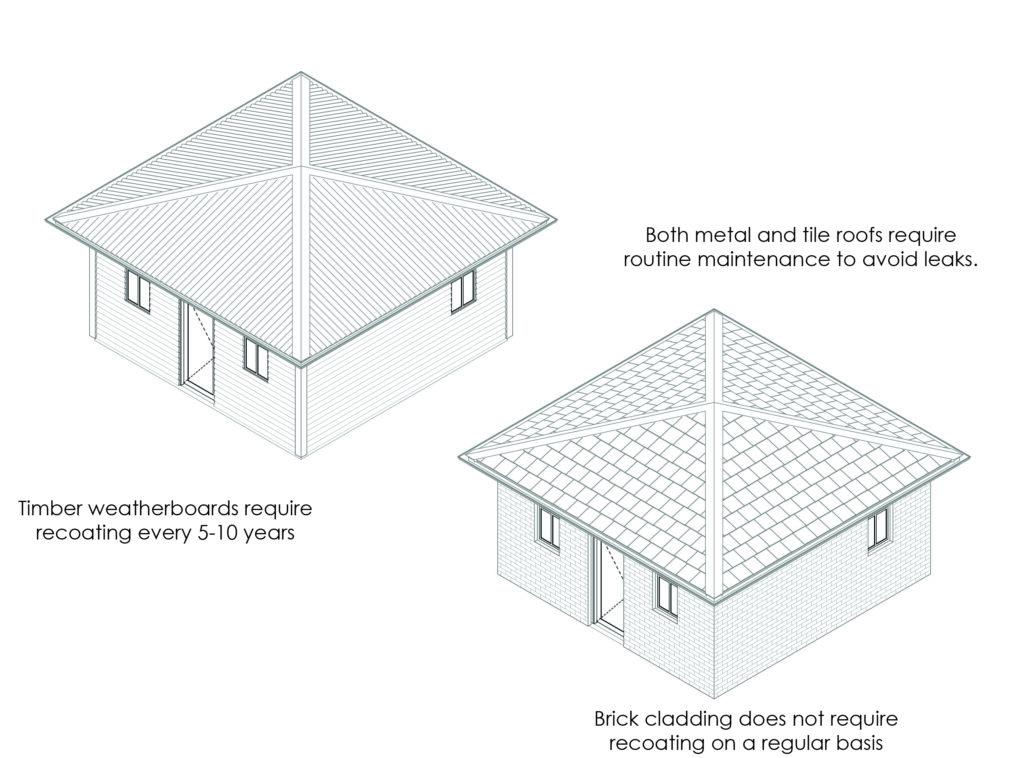
Durability
When selecting materials for roof or wall cladding, it is important to consider the building site’s context and how durable a material is within that context. Selecting durable materials for specific sites is key when designing efficient and sustainable buildings. For example, the location and climate can play a role in material selection. Coastal sites require hardy materials that can withstand sea spray and high wind zones. Material selection is key in this instance to reduce maintenance, while providing an efficient building envelope.
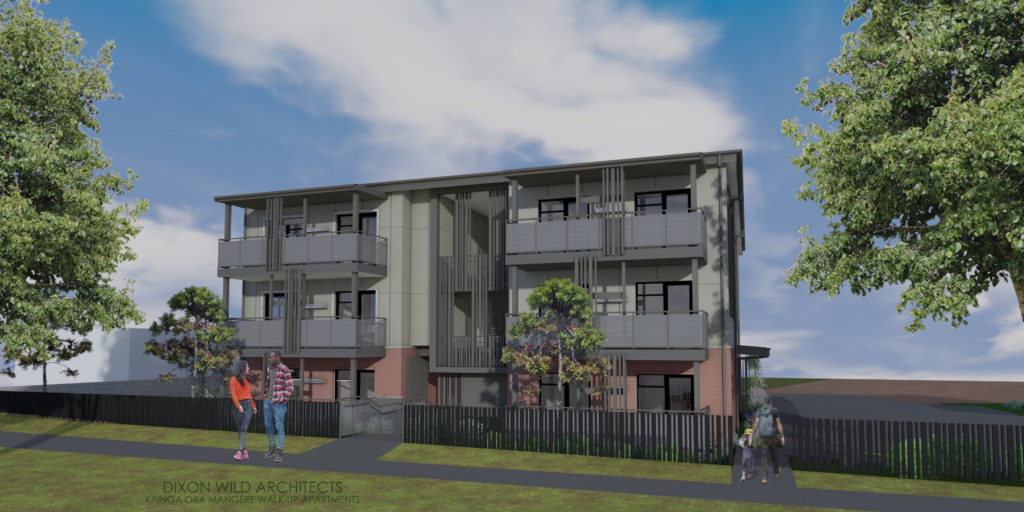
Image: The ground floor material of this Kainga Ora apartment (DWA design) is brick, which is more durable than the upper floor’s sheet cladding. Pedestrians have access to the ground floor, and could damage the sheet cladding if it is within reach.
Sustainability and Embodied Energy
Embodied energy includes all the energy it takes to resource, manufacture, transport, install, maintain and dispose of a material[2]. Energy consumption produces CO2, which contributes to greenhouse gas emissions. The embodied energy can give an indication of the overall impact a building has on the environement.[3]
Things to consider when selecting sustainable materials:
- Locally sourced materials
- Recycled materials
- Materials manufactured using renewable energy sources
- Materials that are certified, CarbonZero or Environmental Choice NZ
- Comply with environmental standards, such as ISO 14001 or Enviro-Mark
- Materials that use ZeroWaste
- Avoiding waste.
The size of a material should be considered to reduce the overall construction waste of a project. For example, the height of most ceilings measures as 2.4m or 2.7m, which is the height of plasterboard lining. If the ceiling height was 2.5m, a 2.7m sheet would need to be cut down to size. This creates waste, as the remaining 200mm high piece is too small to be reused elsewhere. This adds to the overall waste of the project, which will most likely end up in the landfill.
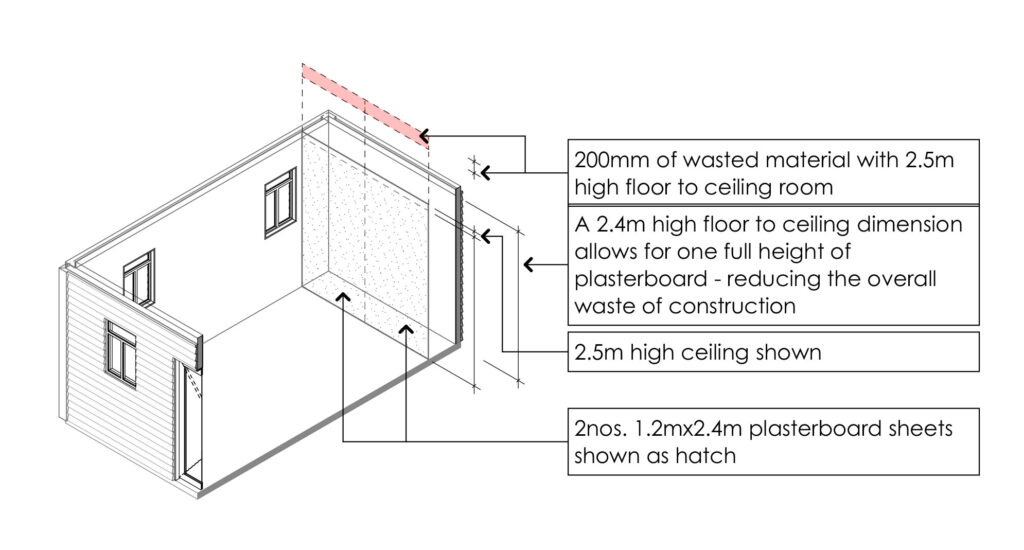
Image: The red fill indicates the wasted material destined for the landfill.
Material Selection and the architect’s role
Dixon Wild Architects (DWA) have extensive knowledge of a range of materials, from cladding to insulation. DWA research each material to investigate whether it meets the building code, is suitable for the site’s context and sustainable. Material / colour palettes are arranged by DWA once the materials have been selected. These material palettes can be shown to our clients so that they get a sense of the finished texture and colour of each material.
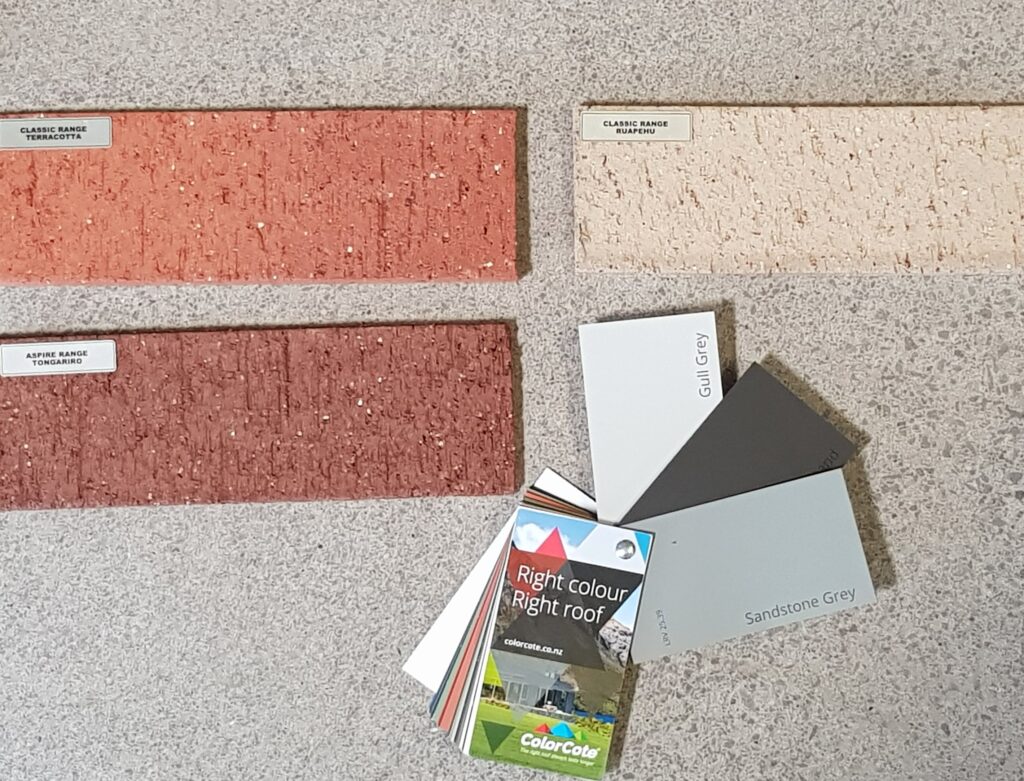
Image: material palette done by DWA for a recent project.
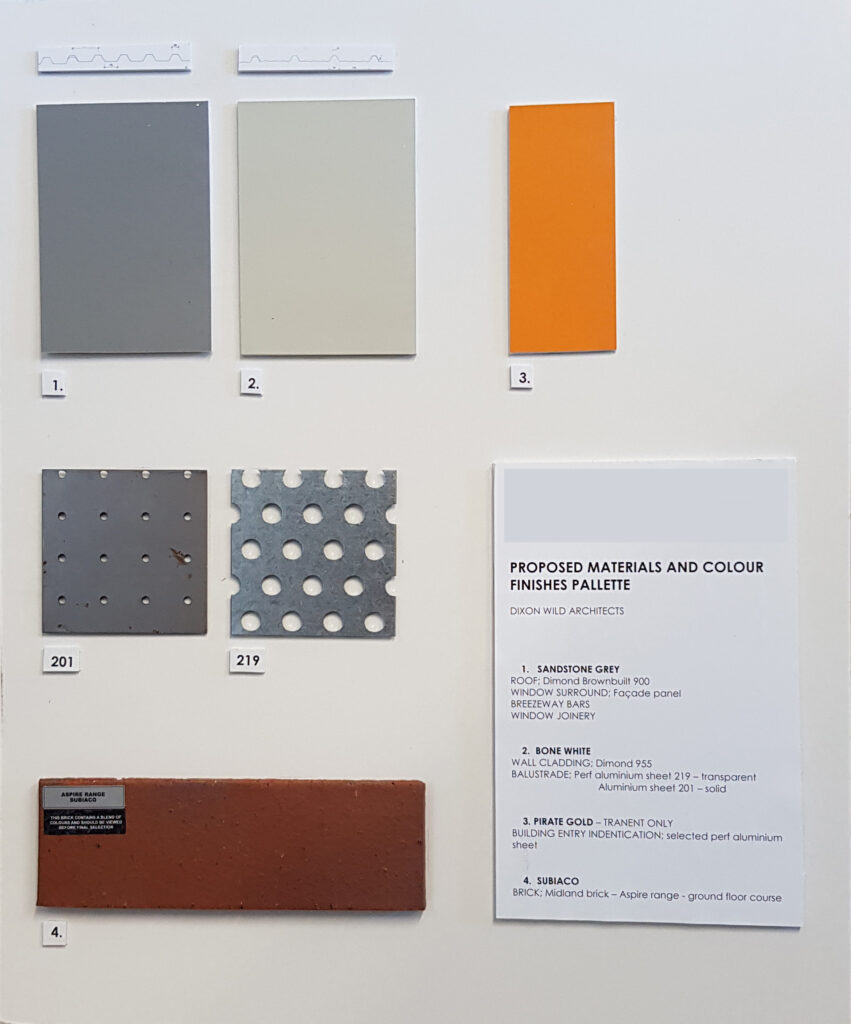
Image: Material palette illustrating the proposed cladding’s paint finish, brick colour and metal perforated panels for balustrades.
If you would like help with your project, please don’t hesitate to get in contact!
Information Links:
[1] http://www.aucklanddesignmanual.co.nz/sites-and-buildings/apartments/guidance/the-building/sustainable-design/material-selection
[2] http://www.aucklanddesignmanual.co.nz/sites-and-buildings/apartments/guidance/the-building/sustainable-design/material-selection





